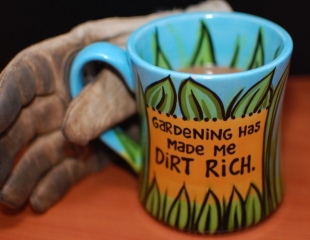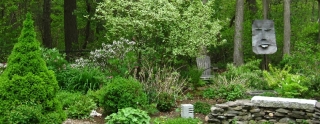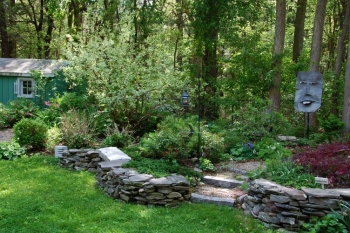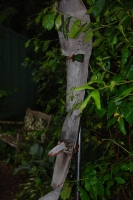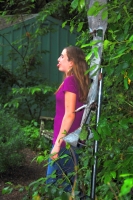Archive for January 2011
Dirt – A Love Story
It’s everywhere! We scrub it off our hands, our shoes, our personae. We think: clean = good, dirt = bad. Even gardeners succumb to dirt-riddance — we clean our gardens in the spring! But I’m telling you — dirt is your friend, not your enemy.
Here’s why.Get Smart – Eat Dirt!
Dirt harbors essential micro-organisms (like bacteria and fungi). “Yikes!“, you shriek, “That’s a good thing?“. Not just good, essential.
Soil scientists say each gram of soil (less than a teaspoonful) contains over 1,000,000,000 microbes (1 billion!), hosting over 10,000 different species. Here’s what some of these buggers do:
- grow our crops,
- convert wastes into compost,
- deliver vitamins to plants (in the “rhizosphere“),
- kill insects,
- consume toxic waste (like oil spills), and
- create soil in the first place
When soil is first made, for example after a volcano, some nutrients are missing, including nitrogen and carbon. Therefore, the first organisms to colonize the soil are generally nitrogen fixers and photosynthesizers that fix carbon. [DLC-ME]
Furthermore, a study conducted by researchers Dorothy Matthews and Susan Jenks at The Sage Colleges (Troy, NY) suggests that soil-borne germs play a role in reducing anxiety and enhancing learning. The study attracted lots of coverage, like “Can Bacteria Make You Smarter?” (Science Daily) and on Radio Netherlands “The Dirt Show“. Here the two researchers pose with dirt martinis (yuk!).
Anyway, get smart — eat dirt!
Dirt – Accidentally in Love
I began my wholesome relationship with dirt by accident, often the case with true love. I had planned a border along the front driveway and set to work removing a strip of sod about 2 feet wide and 80 feet long. I had loam delivered to create the bed where the sod once was. For expediency, I dumped the torn up sod in a low spot in the backyard; it formed a chunky mound on which I later dumped fall leaves and some additional loam on top to hold it all in place.
I finished the driveway border project, planting daylilies, astilbe and daffodils topped with a layer of bark mulch. Over the next couple of years I expanded the experimental mound in the backyard, adding a curved path with pea stone gravel, throwing in Bleeding Hearts, Oriental lilies, astilbe, a leftover Alberta Spruce, a red twig dogwood, Japanese dwarf spirea, ferns (etc.). What I found was — it didn’t matter what I planted there. Everything flourished. I had accidentally created a rich, organic home for my woodland plants! Dirt won me over and I’m accidentally in love!
I’ve since enlarged the accidental garden with yard clippings, chopped oak leaves, more loam, and barn “soil” from a nearby stable. In the expanded section, I added shrub roses, Columbine, an ornamental Japanese maple, American ginger, epimedium, sweet pepperbush (Clethra) and a stone wall. We’re happy together.
The Joy of Dirt
Back to the driveway border. It perennially struggles — its loamy bed dries out in summer because it doesn’t have enough organic material to store water for long. The day lilies come up OK, but they haven’t prospered; ditto the daffodils. Some day, I will re-visit this project and give it the tender lovin’ dirt it needs.
I’ve started another mound in the front yard: lawn clippings, chopped leaves, compost from the Marshfield transfer station (aka, the dump), and a decorative covering of bark mulch. It’s January and the mound is slumbering beneath a foot of snow, while microorganisms and worms are busily feeding and creating new dirt. Oh, joy!
Now it’s your turn — Share the dirt!
Tin Man Garden Art
Tin Man overlooks the garden, standing near its wooded, western edge. He is flanked by two Tupelo trees and footed by woodland perennials: ferns, trillium, Lenten Rose (helleborus),
and viney ground cover (ajuga reptans). Hint: Don’t ever plant Bugleweed – ajuga. Ever.)The Tin Man Cometh
Tin Man was created by Peter Beals, an auto body repair man from Kingston, Massachusetts. I purchased his work
at the annual North River Arts Society (NRAS) Festival of the Arts in Marshfield Hills, MA because it appealed to a grand whimsy and the price was right. Standing over 7 feet (2.1 meters) tall, Tin Man has occupied his outpost in my garden since June 2, 2006.He debuted at the garden party celebrating Kenyatta Braithwaite’s (Weymouth, MA) academic success. I had to disrupt NRAS protocol to liberate Tin Man in advance from the Festival; accomplished with support from our friend and NRAS kingpin, David Brega, just in time for Keny’s party. Tin Man has attended all of our backyard events ever since.
Ars Longa Vita Brevis*
Gazing across the quiet garden he is stalwart, with a look of permanence and solidity.
But his profile reveals another truth – Tin Man is shallow and insubstantial. Almost two-dimensional, like Flat Stanley.
He takes our parties seriously. He attracts attention, yes, and teasing. But teasers poke fun fondly and he’s never offended.
*Ars longa, vita brevis (Hippocrates), commonly translated as “art is long, life is short.”
Tin Man Zeitgeist
Postured, impermanent, intent, revealing and deceiving. Tin Man was one of the first non-functional additions to my garden. He has his own story and he’s sticking to it. What story does your garden have? Share it!
4 Hints for Getting Started in the Garden
Guest blog: Christopher Waddell (Hanson, MA). Chris has been growing his own fruits and vegetables organically for more than two decades.
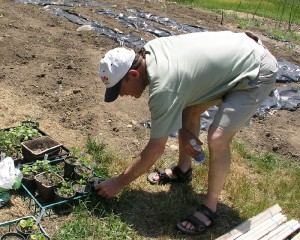
Chris Waddell in his garden
His suggestions for your success follow. He begins…
The best way to learn how to garden is to read all you can and then go out and kill every plant at least once. Try any/everything and learn from mistakes. Any hints I share were earned that way. Here are some for early in the season…
- Not yet!!!
Seeds started now languish from low sun on windowsills and in the sky. If they do take, they’ll grow long, skinny and weak way too soon to be put out.
Exception: geranium seeds. They’re slow. You’ll interplant them with veggies to ward off and kill beetles. - Read catalogs
They glow and motivate and work to get you daydreaming and planting. Paper catalogs are more chock-full of info, like planting zones, pollination, ad infinitum, than the online ones. Go online to order a copy. There are many; some with too much hype, others limited in scope or just middle retailers.
Authentic seed growers include Park Seed Co. (my favorite), Burpee, Miller, Jung, R. H. Shumway. Enjoy; then believe about half the outlandish claims. Read for what they fail to mention.
- Avoid heirloom varieties
Those are types of yore with little resistance to plant diseases and pests that have evolved over the past few decades by destroying crops. To keep these plants healthy requires tons of spraying.
Hybrids were developed to build in natural resistance to plant stressors like fungus, rust, aridity, insects. Go a season or two with your hybrids. Then try some of the old varieties.
- Go outside
Throw all the organic matter you can on your soil, like leaves, grass, seaweed, manure (any), kitchen waste. Snow is an excellent slow-release fertilizer. Then go in, get warm, browse the catalogs and dream of a sun higher in the sky.
Thanks, Chris! I mentioned gardeners’ traits in my Seeds are in post (imagination, faith, patience, diligence, hope…). Chris embodies all these and then some.
What makes your garden grow? Share some of your hints!
Seeds are in
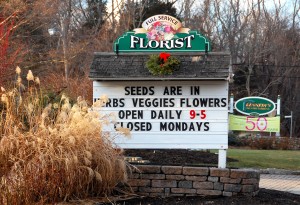
January 8, 2011 - Seeds are in
Like plants, gardeners come in many varieties, but they seem to share some common traits: imagination, faith, patience, optimism, diligence, hope…
What other gardener traits can you think of? Share your perspective.
